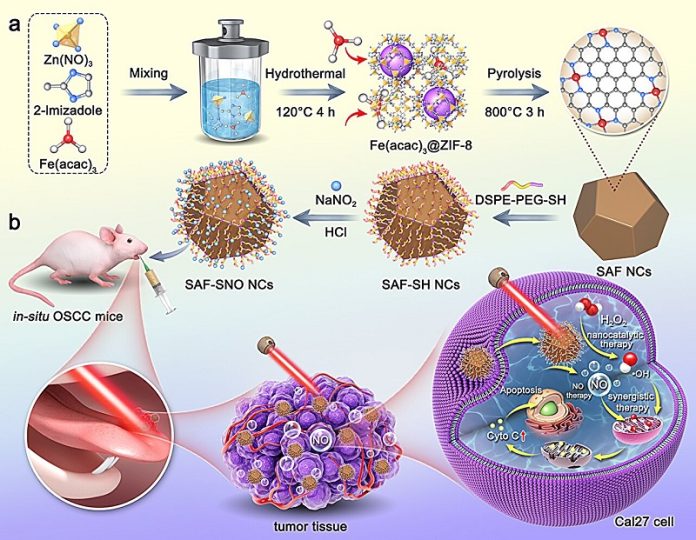
Scientists at Shanghai Jiaotong University School of Medicine have discovered a promising new treatment for oral squamous cell carcinoma, a type of aggressive oral cancer.
This innovative method uses a combination of nitric oxide gas therapy and nanocatalytic therapy to target and kill cancer cells more effectively while reducing side effects.
The findings were published in Science and Technology of Advanced Materials.
Oral squamous cell carcinoma is known for spreading quickly and often returning after treatment.
Traditional treatments like surgery, chemotherapy, and radiation can have severe side effects, such as difficulty speaking or eating, and painful conditions like mouth sores and dry mouth.
Researchers are seeking better treatments that are less harsh on patients.
One promising approach involves nanocatalysts, which are tiny particles measuring between 1 and 100 nanometers.
These particles can accelerate chemical reactions, making treatments more effective. Professor Ping Xiong, who led the study, explains, “We created tiny iron particles made of individual iron atoms designed to interact with hydrogen peroxide, a substance found in high levels in tumor cells.”
These iron particles use a chemical process called the Fenton reaction. In this reaction, the iron atoms act as catalysts to convert hydrogen peroxide into highly toxic hydroxyl radicals.
These radicals are extremely reactive and damage cellular components like DNA and proteins, causing intense oxidative stress.
Additionally, the iron particles carried molecules that release nitric oxide gas when activated by near-infrared laser light. This gas boosts the effect of the hydroxyl radicals by triggering apoptosis, a controlled form of cell death essential for removing damaged cells.
In animal experiments, a single dose of this treatment combined with a laser pulse reduced tumors by about 85.5%, indicating the treatment’s effectiveness.
“This treatment specifically targets cancer cells, minimizing damage to healthy tissues and side effects, making it more efficient and better tolerated by the body,” says Yuting Xie, one of the study’s authors.
One challenge was ensuring that the infrared laser targeted only the tumor, especially in hard-to-reach areas like the sides and bottom of the tongue. The team is working on ways to improve the precision of the laser treatment to avoid damaging surrounding healthy tissues.
One potential solution is developing nanocatalysts that can be administered through an intravenous injection. This method could enhance targeting by interacting with the laser more precisely.
The researchers are also exploring strategies to prevent the cancer from spreading or returning after treatment. By refining these technologies, they hope to create a more effective and targeted treatment option for this invasive cancer.
This new dual-action therapy shows great promise in providing a better, less harmful way to treat aggressive oral cancer.



